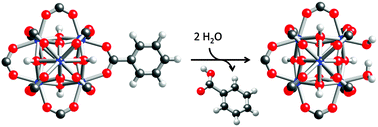Are Zr6-based MOFs water stable? Linker hydrolysis vs. capillary-force-driven channel collapse†
Abstract
Metal–organic frameworks (MOFs) built up from Zr6-based nodes and multi-topic carboxylate linkers have attracted attention due to their favourable thermal and chemical stability. However, the hydrolytic stability of some of these Zr6-based MOFs has recently been questioned. Herein we demonstrate that two Zr6-based frameworks, namely UiO-67 and NU-1000, are stable towards linker hydrolysis in H2O, but collapse during activation from H2O. Importantly, this framework collapse can be overcome by utilizing solvent-exchange to solvents exhibiting lower capillary forces such as acetone.


 Please wait while we load your content...
Please wait while we load your content...